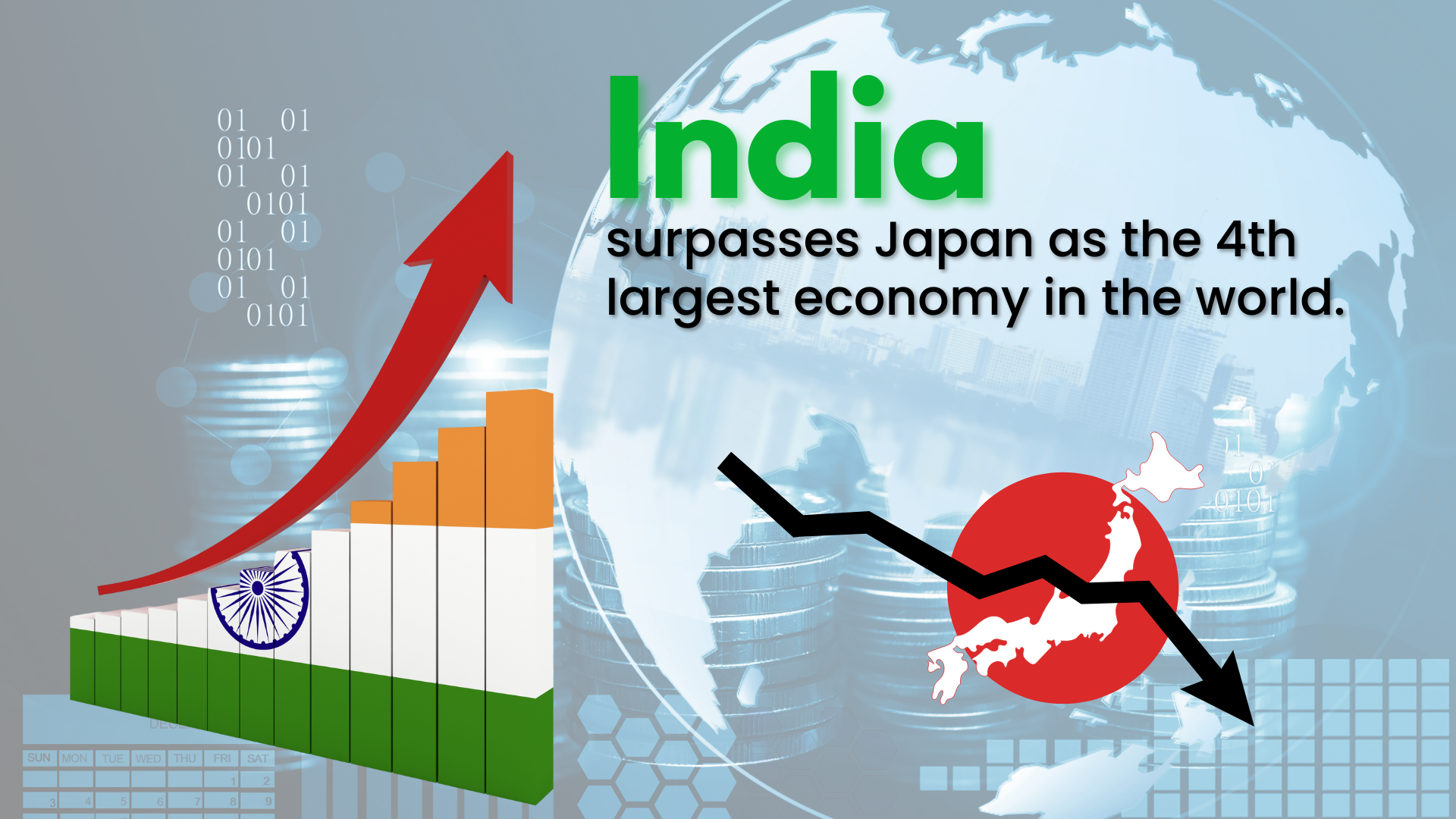
In a landmark achievement that underscores India’s remarkable economic transformation, the nation has officially overtaken Japan to become the world’s fourth-largest economy. This historic milestone, recently confirmed by NITI Aayog CEO B.V.R. Subrahmanyam, marks a pivotal moment in India’s journey toward becoming a global economic powerhouse.
The Numbers That Tell the Story
According to the latest International Monetary Fund (IMF) World Economic Outlook released in April 2025, India’s nominal GDP is projected to reach $4.187 trillion in 2025, marginally but significantly surpassing Japan’s projected GDP of $4.186 trillion. While the difference may seem small in absolute terms, the symbolic and strategic importance of this achievement cannot be overstated.
This represents an extraordinary journey for India, whose economy was valued at just $2.1 trillion in 2015. In merely a decade, the country has more than doubled its economic output, demonstrating the power of sustained reforms, demographic advantages, and strategic policy initiatives.
NITI Aayog’s Confident Projection
Speaking at the tenth Governing Council Meeting of NITI Aayog, CEO B.V.R. Subrahmanyam didn’t just celebrate the current achievement but painted an even more ambitious picture for India’s economic future. He announced that India is now positioned to displace Germany from the third rank within the next 2.5 to 3 years, a projection that would place India among the top three global economies alongside the United States and China.
This isn’t mere optimism—it’s backed by robust data and economic fundamentals. The NITI Aayog’s confidence stems from India’s consistent GDP growth rates, which have outpaced most major economies even during challenging global conditions.
The Path to Third Place: Germany in Sight
The IMF projections paint a compelling picture of India’s continued ascent. By 2028, India’s GDP is expected to reach $5.584 billion, which would comfortably surpass Germany’s projected $5.252 billion. This trajectory positions India to become the third-largest economy globally, a remarkable achievement for a nation that gained independence less than 80 years ago.
Germany’s economic challenges, including minimal growth projections of 0% in 2025 and just 0.9% in 2026, create additional tailwinds for India’s relative economic rise. The European nation faces headwinds from trade tensions and structural economic challenges that contrast sharply with India’s dynamic growth story.
What’s Driving India’s Economic Success?
Several factors contribute to India’s impressive economic performance. The country’s massive demographic dividend, with over 1.4 billion people and a median age of around 28, provides a substantial consumer base and workforce. Additionally, India’s focus on digital transformation, infrastructure development, and manufacturing initiatives like “Make in India” have created multiple growth engines.
The services sector, particularly information technology and business process outsourcing, continues to be a major contributor to GDP growth. Meanwhile, the government’s push toward renewable energy, startup ecosystem development, and ease of doing business reforms have attracted significant foreign investment and fostered domestic entrepreneurship.
Global Implications and Future Outlook
India’s rise to fourth place in global GDP rankings has significant implications for international trade, investment flows, and geopolitical dynamics. As Malcolm Dorson from Global X ETF noted, India operates as a “fine-tuned compounding machine,” and its ascension to the top four economies “is a done deal.”
The IMF has adjusted India’s GDP growth forecast for 2025 to 6.2%, which, while slightly lower than previous projections, still represents robust growth in the global context. This sustained growth trajectory suggests that India’s economic rise is not a temporary phenomenon but rather a structural shift that will reshape global economic dynamics for decades to come.
Challenges and Opportunities Ahead
While these achievements are remarkable, India faces ongoing challenges that will determine whether it can sustain this growth momentum. Issues such as income inequality, infrastructure gaps, environmental sustainability, and the need for continued economic reforms remain critical areas for attention.
However, the opportunities are equally significant. India’s digital economy is expanding rapidly, with increasing internet penetration and smartphone adoption driving e-commerce, fintech, and digital services growth. The country’s commitment to renewable energy and its ambitious climate targets also position it well for the global transition to sustainable development.
A Historic Moment
India’s emergence as the world’s fourth-largest economy represents more than just statistical achievement—it symbolizes the nation’s economic maturation and growing influence on the global stage. From a GDP of $2.1 trillion in 2015 to an projected $4.187 trillion in 2025, India’s economic story is one of transformation, aspiration, and achievement.
As NITI Aayog confidently projects India’s rise to third place within the next few years, the nation stands at the threshold of even greater economic prominence. This milestone serves as both a celebration of past achievements and a foundation for future ambitions, as India continues its journey toward becoming one of the world’s dominant economic powers.
The numbers don’t lie: India’s time as a global economic leader has arrived, and the best may be yet to come.
Sources: International Monetary Fund (IMF), World Economic Outlook, NITI Aayog official statements and projections, Bloomberg, Economic Times, Livemint.com, Hindustan.com, Business Standard.

